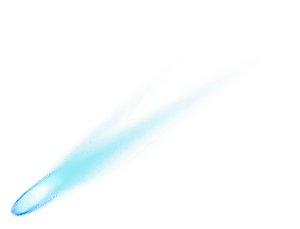The Downlink • Jan 27, 2023
By Jove! (Literally)
Space Snapshot

The Jupiter system is home to some truly remarkable little worlds, also known as the Jovian moons. Io, seen here in an image taken by NASA’s Galileo spacecraft in 1999, is one of the weirdest. We’ll soon be learning more about the unique, volcanic moon as NASA’s Juno spacecraft, which has been orbiting Jupiter since 2016, turns its instruments toward Io this year. Get ready for some jaw-dropping new images and exciting new discoveries about this strange little moon.
You love space, now take action
This weekly newsletter is your toolkit to learn more about space, share information with your friends and family, and take direct action to support exploration. Anyone can subscribe at planetary.org/connect to receive it as a weekly email.
Mission Briefings


ESA’s mission to Jupiter’s moons will launch this April. The European Space Agency’s Jupiter Icy Moons Explorer (JUICE) mission is ready to ship to a launch facility in French Guiana where it will launch in April. The mission will take eight years to reach the Jupiter system, where it will study potentially ocean-bearing moons Ganymede, Europa, and Callisto. Pictured: An artist’s impression of JUICE at Jupiter. Image credit: ESA.

Ingenuity is still keeping up with Perseverance. Nearly two years after landing on Mars, the small, experimental drone spacecraft recently completed its 40th flight. It has been following the Perseverance rover on its route across the Martian terrain, successfully demonstrating the viability of using a flying spacecraft to explore another world.

Commercial launches will soon be able to happen in Canada. This week the Government of Canada announced a new regulatory framework for commercial launches from Canadian soil, expanding the nation’s space capabilities.

The Lucy spacecraft’s solar array is still facing issues. When the NASA mission to study the Jupiter Trojan asteroids launched in October 2021, one of its two solar arrays failed to deploy correctly. Although the mission team states it is still functioning adequately, their efforts to correct its deployment continue to be fruitless. The team will resume efforts to fix it late next year when the spacecraft heads back toward the Sun on its long trajectory toward the orbit of Jupiter.
From The Planetary Society


Juno has taught us a lot about Jupiter. Now, on to its moons. A year and a half into its extended mission at Jupiter, the NASA mission has been turning its instruments away from the gas giant and toward the planet’s moons. This week’s Planetary Radio takes a dive into the latest discoveries about Jupiter’s moons Ganymede, Europa, and Io with Scott Bolton, the principal investigator for the Juno mission. Pictured: Ganymede as imaged by Juno during its June 7, 2021 flyby of Jupiter's icy moon. Image credit: NASA/JPL-Caltech/SwRI/MSSS.

JWST’s exoplanet research is already yielding exciting results. The world’s newest, most powerful space telescope has confirmed the existence of a rocky exoplanet in orbit around a star 40.7 light-years away. This marks the beginning of a new era of exoplanet research, in which smaller, more Earth-like worlds may be within our observational reach.
Wear a piece of history

When the Spirit and Opportunity rovers landed on Mars in 2004, The Planetary Society sent a group of "student astronauts" to mission control at NASA’s Jet Propulsion Laboratory as part of our Red Rover Goes to Mars program. This is part of the story told in the new documentary Goodnight Oppy, and now, for a limited time, you can buy "Red Rover Goes to Mars" apparel, including sweatshirts and tees, featured in the documentary. All proceeds support The Planetary Society’s mission to empower the world’s citizens to advance space science and exploration.
What's Up

Look for super-bright Venus low in the west shortly after sunset. Saturn is below it, but will be increasingly hard to see against the setting Sun’s light. Higher in the sky you'll see Jupiter shining brighter than the brightest star in the sky. Keep going across the sky to find reddish Mars near another reddish, but less bright object, the star Aldebaran. The “Green Comet,” a.k.a. Comet 2022 E3 (ZTF), will be closest to Earth on Feb. 1 and should be visible with binoculars or a telescope from a dark site. Learn more about how to spot this rare celestial visitor.
Wow of the Week

Astrophotography merges science, technology, and artistic vision to create stunning views of real celestial phenomena. This image from astrophotographer Andrew McCarthy shows Comet 2022 E3 (ZTF) in stunning clarity, achieved thanks to image processing software with the help of McCarthy’s aesthetic instincts. Learn more about McCarthy’s process in this tweet thread.
Send us your artwork!
We love to feature space artwork in the Downlink. If you create any kind of space-related art, we invite you to send it to us by replying to any Downlink email or writing to [email protected]. Please let us know in your email if you’re a Planetary Society member!


 Explore Worlds
Explore Worlds Find Life
Find Life Defend Earth
Defend Earth


